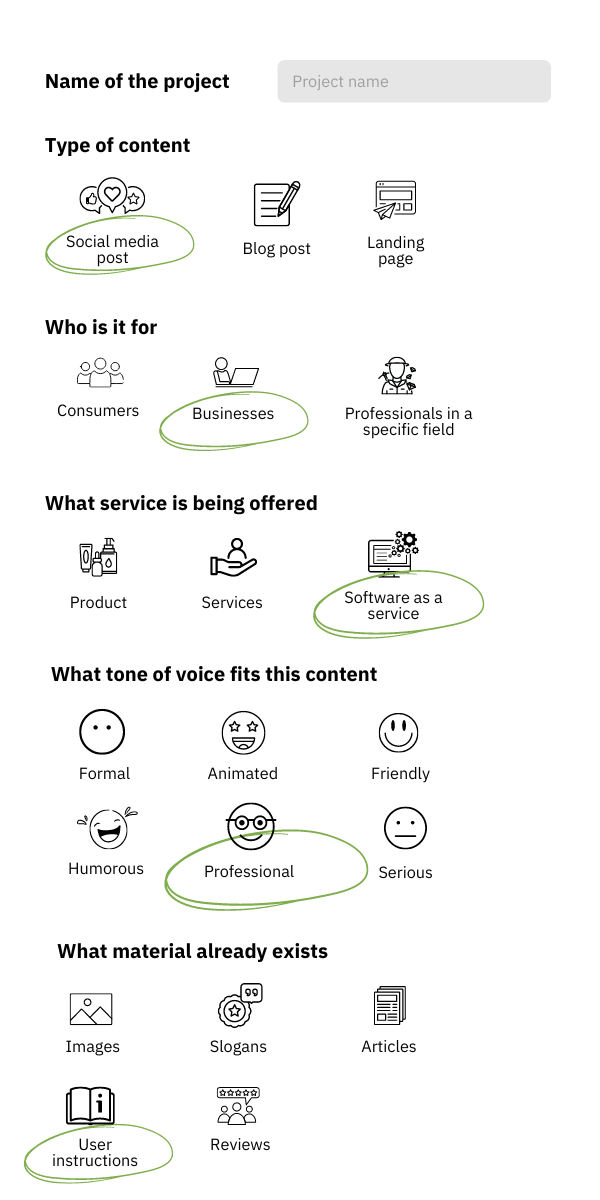Imagine this: You’re working on a high-profile global marketing campaign with diverse language needs. The project requires multilingual content, tight timelines and impeccable quality. As the project progresses, you realise your multilingual resources are stretched thin and there’s limited time to onboard a new language partner or test their workflows adequately. This scenario is all too familiar for many companies grappling with the challenge of managing diverse digital marketing requirements amidst time constraints and resource limitations. However, there is a solution: rather than scrambling to find a language partner during project execution, do your research ahead of time and select a partner who is a good fit for your budget and compatibility requirements.
The workflow solution
In marketing, things must move fast to meet deadlines and budgets. If you regularly require multilingual content for yourself or clients, establishing a reliable content creation strategy beforehand is crucial. While you may have in-house colleagues who are multilingual and can help with some translation work, the right language service partner company will add value with efficient workflows that are more cost-effective and mitigate pressure on your in-house team. Collaborating with translation professionals will ensure that you can handle large volumes, produce culturally sensitive and appropriate content and also guarantee consistency across translated materials.
Let’s look at an example of a marketing agency whose client needs content produced in Danish as well as English. While the agency’s team has both English and Danish speakers and has plenty of experience in sectors including music and sports, they must now produce content about a women’s health tech product. Instead of engaging in the time-consuming and costly process of finding a Danish copywriter or freelance translator proficient in medical and technical terminology, they can streamline these efforts by working with an ISO-certified language solutions partner. This strategy not only facilitates meeting quality and deadline commitments but also reduces recruitment efforts and costs, providing a seamless and efficient solution tailored to the agency’s needs.
Now, imagine the same client then wants to launch their campaigns in other Nordic countries. Rather than hurriedly searching for Swedish, Norwegian and Finnish collaborators, the marketing agency turns to their trusted language solutions partner again. Following the successful launch in the Nordics, the client wants to produce blog content in Swedish on a regular basis. By building a relationship with the language solutions partner, the marketing agency has secured a scalable content strategy that can adapt and evolve as their multilingual projects grow.
How to work with a language solutions partner
You may be hesitant about adding another stakeholder into your workflow and losing control and transparency over the process. However, with a language solutions partner that prioritises clear communication, seamless integration of processes and the development of mutual trust and confidence, these risks are mitigated and the benefits are significant.
Here at Sandberg, our workflow looks like this:
1. Strategic planning and onboarding
The first step in creating a partnership is onboarding, which involves outlining project requirements, costs, timelines and quality expectations. As a flexible partner that is comfortable integrating into your workflows, we make the process as easy as possible for you, while mitigating the problems that can occur by transitioning content between companies.
For a successful long-term collaboration, we emphasise trust, transparency and open communication to achieve mutual success. This first stage often includes a strategic planning meeting to assess your longer-term needs, such as expansion, time-sensitive projects and peak periods of work, ensuring we are prepared to support your goals effectively.
2. Gathering project materials and information
In the next stage, to make communication easier for all parties involved and streamline the process for our linguists, any key client information must be shared with our project managers and linguists, including brand guidelines, tone of voice and style guides and glossaries of relevant brand terminology. We can also help create these materials if you do not already have them.
We will then agree to craft a detailed brief that includes specific information related to your content and brand. This is done at the outset of our partnership and if any future project deviates from this or your brand guidelines change, a new brief can be created. We provide easy and simple guidance through this process with our templates, an example of which you can see here:

3. Linguistic work, with or without AI
The core of the project lies in dealing with the content itself. Sandberg ensures that our work meets the highest standards of accuracy, consistency and effectiveness. Depending on the solution that best suits you, your content will pass through stages of review and proofreading by multiple linguists, ensuring quality and our adherence to ISO standards.
We also leverage language industry technology, such as translation memories and term bases, to guarantee that translations are consistent and in line with the client’s own terminology and guidelines. This can include AI and machine translation followed by a stage of human review.
4. Independent review
When possible, content is also checked by the project manager before it is returned to the client. This ensures that the final translation aligns with the reference materials provided by the client in the second stage of the workflow.
Throughout our collaboration, you will have a dedicated point of contact who you can consult for any issues or questions. Response time from project managers and our linguists is crucial for maintaining project momentum and addressing queries promptly.
5. Communication and feedback
This open communication extends beyond a single project, as a later feedback stage enables continuous improvement and refinement of translation processes to better align with brand messaging and global marketing objectives. Annual business review calls also keep the line of communication open for feedback and the sharing of new ideas.
As the collaboration continues, this stage becomes crucial to the improvement of quality, efficiency and communication on both sides. We have all been told that “quality means getting it right the first time”, but the truth is that quality can be continuously improved with an ongoing communication loop based on trust and transparency.
Solutions beyond translation
Although translation services form the core offering of a linguistic service partner, Sandberg’s range of solutions is much broader, allowing us to enhance client relationships and add significant value to their projects:
Product name and slogan assessment
For these projects, a literal translation is not always suitable. Therefore, our highly creative linguists strive to replicate the cultural impact of a product name or slogan in the target market. We give you control over the process by offering you several options with back translations, as well as an explanation of the differences between them and the rationale behind our linguists’ decisions.
Multilingual SEO
We have linguists with specialised training in multilingual SEO campaigns. These professionals are proficient in tools such as Google Keyword Planner and are familiar with concepts such as page title, meta description and keyword density.
Website localisation
Website localisation or translation is essential for companies with global growth strategies. We are experts in localising WordPress sites and have extensive experience using plugins such as WPML and Polylang.
Additionally, we offer a specialised testing service called “In-context review”, where our linguists review localised sites on both desktop and mobile devices to ensure that user interfaces are perfectly navigable.
Curation of AI output
We also provide more accessible content generation solutions, utilising technologies such as machine translation and artificial intelligence. In this case, the original content is pre-processed by the translation engine, followed by revision steps tailored to the quality and accuracy requirements of each client. The post-editing process can range from a simple grammatical review to more complex adjustments, including style, tone of voice and terminological appropriateness.
Ultimately, in today’s competitive landscape, efficient workflows are not just a necessity but in actual fact a key differentiator that drives success and profitability. Notably, in one of our partnerships with a marketing agency, our work into Norwegian, Swedish and Finnish for their client resulted in an 85, 64 and 34 per cent increase in revenue, respectively. In our collaboration with a different marketing agency, our ability to communicate efficiently and navigate quick turnaround times while still prioritising quality and accuracy, such as correcting incorrect allergy information, were a highlight for the agency and their client.
There’s no doubt that by having a multilingual content solution in place before the start of a project, digital marketing experts can mitigate the risk of increased project costs or extended timelines without compromising on quality.
Content creation, Marketing translation, Newsletter June 2024




